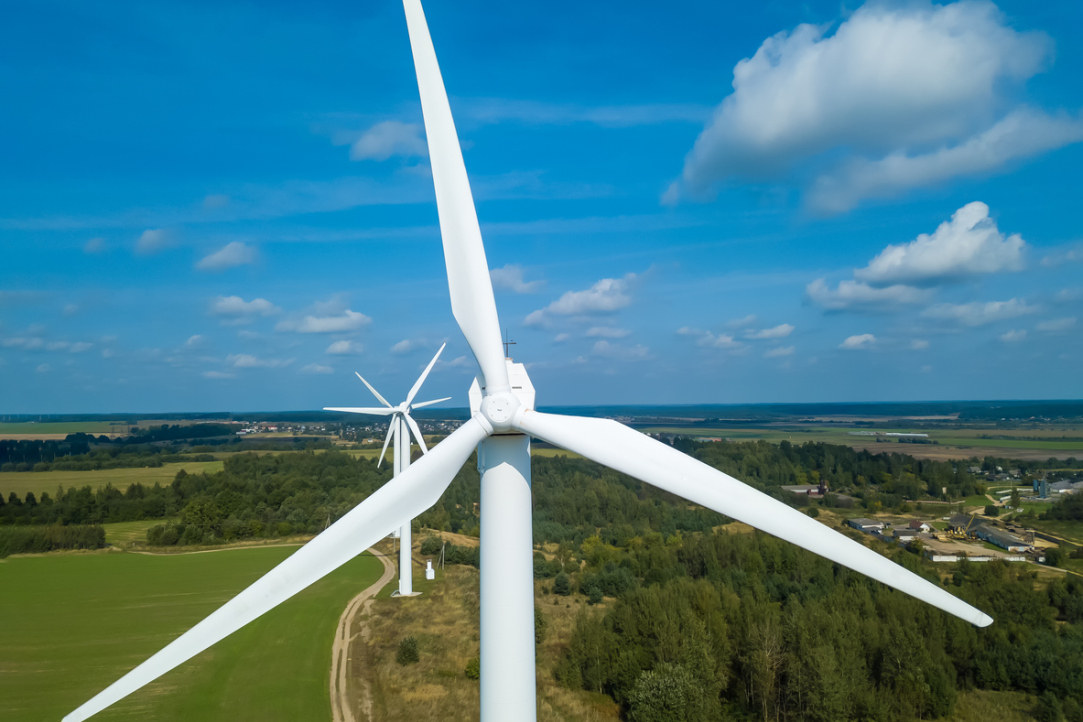Green Energy Patents Boost Company Profitability

For nuclear energy, the increase can be up to 1.6%
An ESG strategy—Environmental, Social, and Corporate Governance—not only helps preserve the environment but can also generate tangible income. Thus, the use of renewable energy sources (RES) and green technologies in the energy sector enhances return on investment and profitability. In contrast, higher CO2 emissions result in lower financial performance. This has been demonstrated in a collaborative study by the HSE Faculty of Economic Sciences and the European University at St. Petersburg. Their findings have been published in Frontiers in Environmental Science.
In recent years, green energy technologies have made significant advancements. Governments and businesses invest hundreds of billions of dollars in developing renewable energy sources (RES), nuclear energy, and electric transportation. In 2020, their share accounted for 40% of all investments in the energy sector, totalling $400 billion. In the European Union, spending on green energy is 3.5 times higher than on traditional energy. Meanwhile, China has reduced investments in the gas and oil sectors by 40% to focus on developing RES. Increasingly, research demonstrates that adopting green technologies can have a positive impact on company profitability.
Elena Makeeva, Associate Professor at the HSE Faculty of Economics, Konstantin Popov, Research Assistant at the HSE Corporate Finance Centre, and Olga Teplova, Research Fellow at the European University at St. Petersburg, have investigated how investments in green energy impact the profitability of energy companies in the BRICS countries. The researchers studied 63 largest firms in the BRICS countries and examined their key financial performance indicators, including return on assets (ROA), return on invested capital (ROIC), and market capitalisation.
CO2 emissions and patents related to three primary types of green energy—renewable energy technologies, combustion technologies with mitigation potential, and nuclear energy technologies—were considered as independent variables. China leads among BRICS member countries in all types of patents, with its share reaching 94% for patents in the field of renewable energy and 89% for patents related to hybrid energy systems.

The model also incorporated the company's revenue and investments, along with the per capita GDP of the company's home country, as controls. The authors constructed several models to establish a connection between investments in green technologies, carbon dioxide emissions, and the return on assets and investments, and market capitalisation of companies.
They have found that higher CO2 emissions significantly reduce company profitability and negatively affect market capitalisation: a 1% increase in carbon dioxide emissions results in nearly a 2% decrease in company profitability. The return on investment decreases even further, by 5% to 7%, along with a decrease in market capitalisation. Conversely, the more 'green energy' patents a company registers, the greater its profitability. The return on assets increases by 0.7% on average, and patents in the field of nuclear energy result in the largest increase of up to 1.6%. The return on investment has been found to increase by 2% to 3%. The researchers note that patents for renewable energy technologies contribute significantly only to ROIC, whereas combustion technologies with mitigation potential and nuclear technologies positively influence all financial performance indicators of companies. The authors also advocate for further advancements in nuclear power technology, since a nuclear power plant is a powerful, stable, and low carbon energy source with a long operational lifespan.
However, it should be noted that investments in green energy typically involve long-term commitments and do not yield immediate financial returns. This study demonstrates that businesses prioritising social and environmental responsibility in their operations can eventually achieve significant profits.

Associate Professor, Faculty of Economics, HSE University
The development of green energy should be a priority for BRICS countries, and investing in infrastructure and improving legislation are crucial factors for an expansion of low-carbon technologies in the electric power industry.
See also:
Larger Groups of Students Use AI More Effectively in Learning
Researchers at the Institute of Education and the Faculty of Economic Sciences at HSE University have studied what factors determine the success of student group projects when they are completed with the help of artificial intelligence (AI). Their findings suggest that, in addition to the knowledge level of the team members, the size of the group also plays a significant role—the larger it is, the more efficient the process becomes. The study was published in Innovations in Education and Teaching International.
New Models for Studying Diseases: From Petri Dishes to Organs-on-a-Chip
Biologists from HSE University, in collaboration with researchers from the Kulakov National Medical Research Centre for Obstetrics, Gynecology, and Perinatology, have used advanced microfluidic technologies to study preeclampsia—one of the most dangerous pregnancy complications, posing serious risks to the life and health of both mother and child. In a paper published in BioChip Journal, the researchers review modern cellular models—including advanced placenta-on-a-chip technologies—that offer deeper insights into the mechanisms of the disorder and support the development of effective treatments.
Using Two Cryptocurrencies Enhances Volatility Forecasting
Researchers from the HSE Faculty of Economic Sciences have found that Bitcoin price volatility can be effectively predicted using Ethereum, the second-most popular cryptocurrency. Incorporating Ethereum into a predictive model reduces the forecast error to 23%, outperforming neural networks and other complex algorithms. The article has been published in Applied Econometrics.
Administrative Staff Are Crucial to University Efficiency—But Only in Teaching-Oriented Institutions
An international team of researchers, including scholars from HSE University, has analysed how the number of non-academic staff affects a university’s performance. The study found that the outcome depends on the institution’s profile: in research universities, the share of administrative and support staff has no effect on efficiency, whereas in teaching-oriented universities, there is a positive correlation. The findings have been published in Applied Economics.
Physicists at HSE University Reveal How Vortices Behave in Two-Dimensional Turbulence
Researchers from the Landau Institute for Theoretical Physics of the Russian Academy of Sciences and the HSE University's Faculty of Physics have discovered how external forces affect the behaviour of turbulent flows. The scientists showed that even a small external torque can stabilise the system and extend the lifetime of large vortices. These findings may improve the accuracy of models of atmospheric and oceanic circulation. The paper has been published in Physics of Fluids.
Solvent Instead of Toxic Reagents: Chemists Develop Environmentally Friendly Method for Synthesising Aniline Derivatives
An international team of researchers, including chemists from HSE University and the A.N. Nesmeyanov Institute of Organoelement Compounds of the Russian Academy of Sciences (INEOS RAS), has developed a new method for synthesising aniline derivatives—compounds widely used in the production of medicines, dyes, and electronic materials. Instead of relying on toxic and expensive reagents, they proposed using tetrahydrofuran, which can be derived from renewable raw materials. The reaction was carried out in the presence of readily available cobalt salts and syngas. This approach reduces hazardous waste and simplifies the production process, making it more environmentally friendly. The study has been published in ChemSusChem.
How Colour Affects Pricing: Why Art Collectors Pay More for Blue
Economists from HSE University, St Petersburg State University, and the University of Florida have found which colours in abstract paintings increase their market value. An analysis of thousands of canvases sold at auctions revealed that buyers place a higher value on blue and favour bright, saturated palettes, while showing less appreciation for traditional colour schemes. The article has been published in Information Systems Frontiers.
New Method for Describing Graphene Simplifies Analysis of Nanomaterials
An international team, including scientists from HSE University, has proposed a new mathematical method to analyse the structure of graphene. The scientists demonstrated that the characteristics of a graphene lattice can be represented using a three-step random walk model of a particle. This approach allows the lattice to be described more quickly and without cumbersome calculations. The study has been published in Journal of Physics A: Mathematical and Theoretical.
Scientists Have Modelled Supercapacitor Operation at Molecular and Ionic Level
HSE scientists used supercomputer simulations to study the behaviour of ions and water molecules inside the nanopores of a supercapacitor. The results showed that even a very small amount of water alters the charge distribution inside the nanopores and influences the device’s energy storage capacity. This approach makes it possible to predict how supercapacitors behave under different electrolyte compositions and humidity conditions. The paper has been published in Electrochimica Acta. The study was supported by a grant from the Russian Science Foundation (RSF).
Designing an Accurate Reading Skills Test: Why Parallel Texts are Important in Dyslexia Diagnosis
Researchers from the HSE Centre for Language and Brain have developed a tool for accurately assessing reading skills in adults with reading impairments. It can be used, for instance, before and after sessions with a language therapist. The tool includes two texts that differ in content but are equal in complexity: participants were observed to read them at the same speed, make a similar number of errors, and understand the content to the same degree. Such parallel texts will enable more accurate diagnosis of dyslexia and better monitoring of the effectiveness of interventions aimed at addressing it. The paper has been published in Educational Studies.


